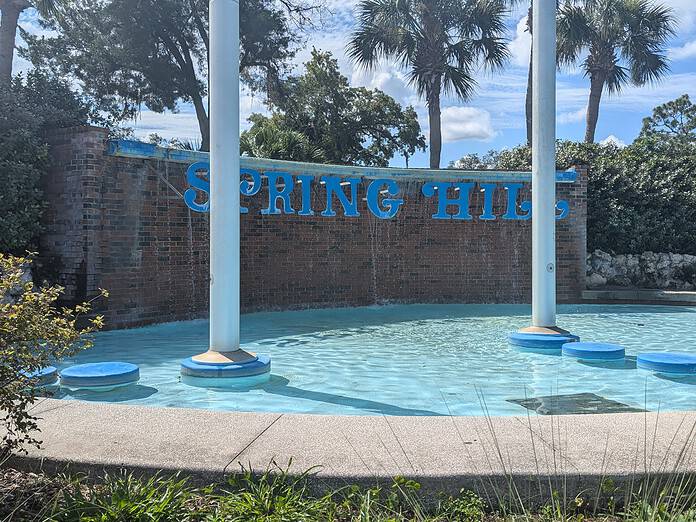A group of Hernando County residents organized a protest to preserve the Spring Hill Waterfall after several commissioners discussed its possible removal at a county workshop earlier this month.
“They brought up that maybe we need to reconfigure it so it could give more space to properly flow that traffic to avoid some accidents. I don’t think that they necessarily wanted to take down the fountain, but I was absolutely not going to support taking down the fountain,” said BOCC Chairwoman Elizabeth Narverud.
Narverud was the most outspoken board member in support of preserving the waterfall during that workshop.
Last Saturday, the community came together to show their displeasure with the potential removal of the waterfall by waving signs at passing cars and urging cars to honk in support of the fountain. The gathering in support of the waterfall was organized in part by Ryan Amsler, who is running against Narverud for county commission.
Cheryl Burnett, a realtor in Hernando County, said, “We have very few attractive landmarks on this side of the county. We have the beautiful Hernando Beach and we also have the Spring Hill water fountain, and that’s it. What else is there that tells people they’re at Spring Hill or Hernando Beach?”
Sherry Kendrat, a seven-year resident of Spring Hill, said that the waterfall was eye-catching when she first moved to the area; it was like an oasis.
Cheryl Kelly, a Spring Hill resident since 1989, said she is trying to apply to place this waterfall on the National Register of Historic Places. She is looking for photographs and newspaper clippings from when the waterfall was first erected to help in her quest to make it a historical landmark.
During the board meeting on Tuesday, the commissioners reached a consensus about their plans for the waterfall.
Chairwoman Elizabeth Narverud said they will be repairing the waterfall with volunteers from the community. Volunteers must formally fill out an application, and Scott Herring, the director of public works, will be in charge of the application process.
“We have community members that are willing to help foot the bill for this. I believe they have a strong say in what’s going to be done as long as it’s conducive with what the community wants,” said Narverud.
![Residents show their support for preserving the Spring Hill Waterfall on Saturday, June 22. [Photo by Julie Maglio]](https://www.hernandosun.com/wp-content/uploads/2024/06/waterfall_protest_1-scaled.jpg)
![Residents show their support for preserving the Spring Hill Waterfall on Saturday, June 22. [Photo by Julie Maglio]](https://www.hernandosun.com/wp-content/uploads/2024/06/waterfall_protest_2_1-scaled.jpg)

